Get up close for a big lettuce crunch with Omo, CMZoo’s 8-month-old Nile hippo calf. Water’s Edge: Africa lead keeper, Philip, gives us an update on Omo’s latest milestones, including his first steps toward training and more explorations throughout his home.
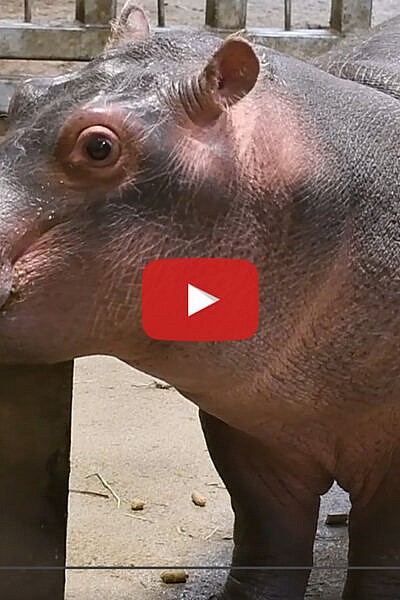

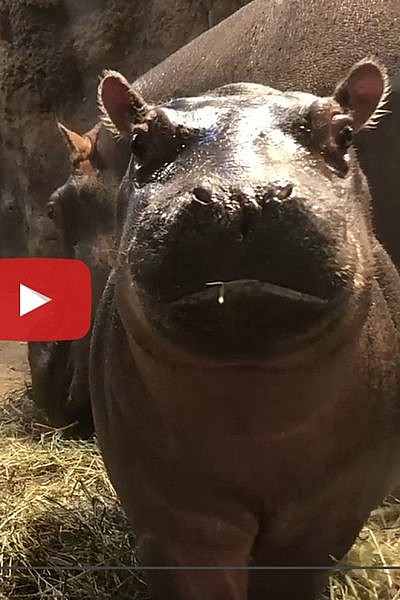

It has been six months of Omo goodness, so we’re taking a little trip down memory lane AND showing you some new up-close Omo footage. Spoiler alert: incoming Omo window boops.
From watching Zambezi embrace motherhood for the first time with such a gentle nature to seeing Omo wild out in the pools, and every nap, plop and ear wiggle in between, it’s been a joy sharing these two with you all. Happy six-month birthday, Omo!
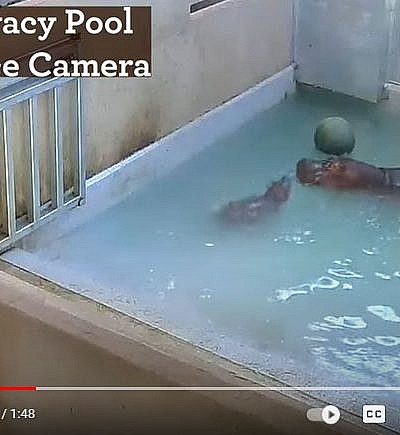

CMZoo’s four hippos have access to multiple indoor and outdoor climate-controlled pools, grassy yards, a waterfall and indoor land areas, which they take turns sharing. Omo and Zambezi chose to spend time in their privacy pool the other day, and the adorable duo had quite the pool party!
Surveillance camera footage caught 5-month-old Omo jumping, splashing, playing with floating enrichment and climbing on Zambezi. 29-year-old Zambezi, Omo’s mom, gets in on the fun, too, encouraging him to ‘chase’ her in the water and having her own fun with the floaties.
Learn more about Omo here: https://www.youtube.com/playlist?list=PLUd9bK-IbrIMxpwuRlrLaZfU4fFwB9cPG
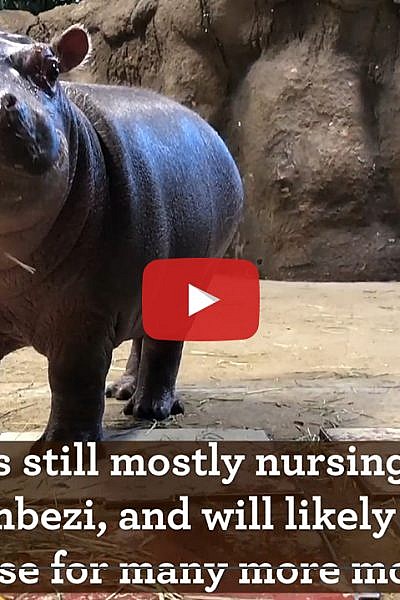

December was a big month for CMZoo’s smallest hippo. He just broke the 300-pound mark! Five-month-old Omo is consistently eating solid foods now, but he’ll continue nursing for several months to come. He’s also getting more confident, showing he’s comfortable around new enrichment items, like big boxes and boomer balls.
Omo is also meeting his neighbors. Watch as he says hello to common warthogs, Alexander and Penelope, through a fence, and gets nose-to-nose with his aunt, Kasai.
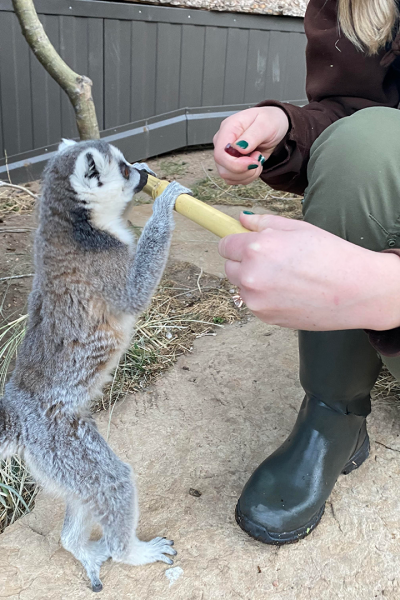

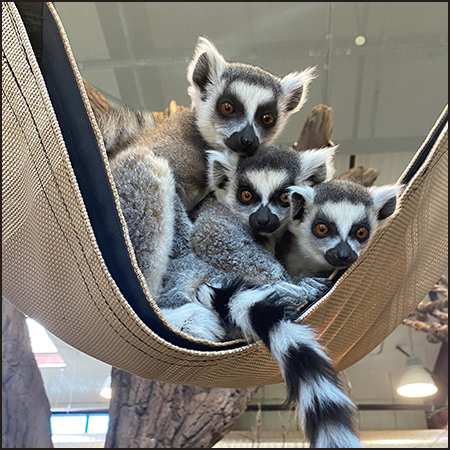
Keepers recently noticed Anja, a 5-month-old ring-tailed lemur pup, appeared to be consistently clenching her hands. The extremely energetic little lemur didn’t appear to be having any mobility issues as a result, but because lemurs use their hands to grip trees and move around, keepers wanted to keep a close eye on her. She was keeping up with her twin brother, Elo, and older half-brother, Maky, just fine.
“Once Anja gained independence and wasn’t spending most of her time clinging to her mom, we noticed she wasn’t opening her hands all the way,” said Grace Sullivan, Water’s Edge: Africa keeper. “She’s constantly leaping around with her brothers, so we’re not concerned about her well-being, but if there’s something we can do now to help her avoid any potential future limitations, of course we want to do that.”
Water’s Edge: Africa keepers and CMZoo’s veterinary staff teamed up to check on little Anja, and didn’t see any injuries or unusual bone structure. There’s no formal diagnosis at this point, but it appears she has tight ligaments.
After consulting with a veterinary sports medicine and rehabilitation specialist, her team built a physical therapy routine for Anja. The routine has similar goals as the exercises prescribed by physical therapists at Children’s Hospital Colorado’s Sports Medicine Center, partners of CMZoo.
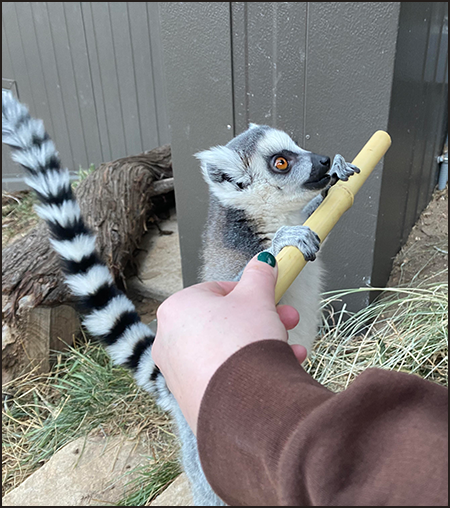
“During her therapy, we ask Anja to hold onto a wooden pole and then we turn the pole slightly so her fingers open up,” said Sullivan. “She’s really smart, and she loves the training rewards she receives during the sessions, so she’s usually eager to participate.”
Anja doesn’t appear to experience discomfort during these training sessions and keepers have seen some improvement in her range of motion since starting the therapy in mid-November. Keepers do this behavior with Anja three times a week.
In addition to training, the team added some obstacles to Lemur Island that encourage her to stretch those tight ligaments as she moves around throughout the day. There’s a series of bamboo poles attached perpendicularly to another pole, which the lemurs have all enjoyed exploring. The poles are a wider circumference than other climbing opportunities on Lemur Island, so Anja’s fingers get a good stretch while she navigates, as has fun at the same time.
“The lemurs also share a new rope hammock made of thick ropes set far apart,” said Sullivan. “It’s enriching for all of the lemurs to explore these new items, but we’re especially happy to see Anja using them successfully.”
The team will continue working with Anja to gain flexibility in her fingers.
“We talk about how there’s always a balance when you’re addressing any potential struggles an animal might face,” said Sullivan. “We want to make sure Anja is okay, but we don’t want to go too far with treatments or diagnostics if she can clearly do all of the lemur things she needs to do with her hands as they are. Her hands might just be another thing that make this little one so special, in the long run. For now, we’re seeing the exercises help, so we’ll keep doing them.”
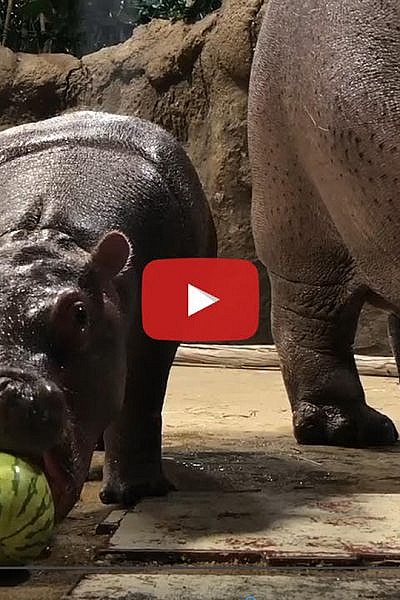

Four-month-old Nile hippo calf, Omo, is growing and learning every day. Although he’s still nursing to get all of the nutrients he needs, he has started to explore solid foods. Because his parents, Zambezi and Biko, and his aunt, Kasai, love to smash watermelons, we couldn’t resist seeing if Omo would be interested in this little melon, sized perfectly for our little hippo.
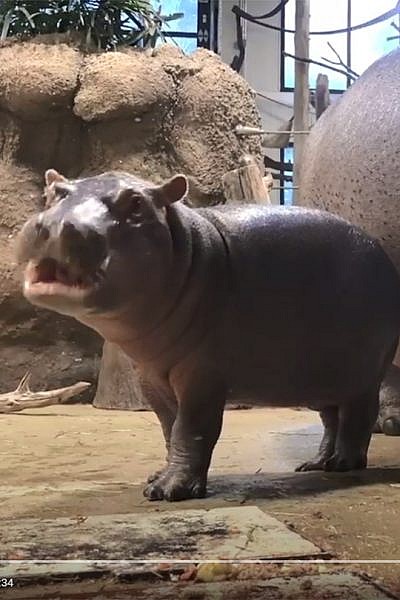

Omo is four months old today! He doesn’t quite have the teeth for chewing solid foods, but he sure does try! Omo is working on mastering mastication while his mom, Zambezi, patiently eats her dinner next to him. He still has a bit of work to do, but one day, we know he’ll be a chewing champ!
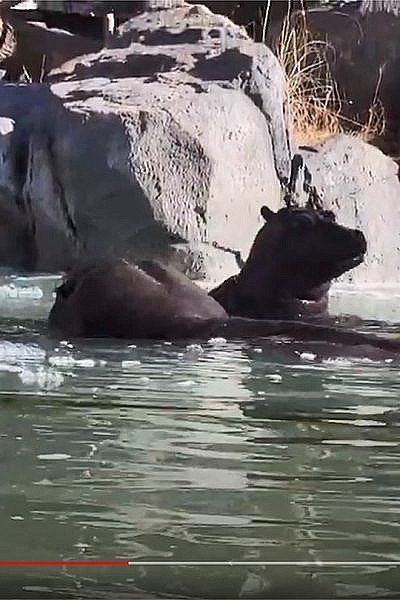

As Omo grows bigger by the day, so does his playfulness! Lately, our 3-month-old hippo has been spending his days practicing his porpoising, a behavior that hippos can exhibit to express excitement and playfulness. Instead of pushing off slowly from the bottom of the pool, like they usually do to resurface, porpoising hippos leap from the bottom, causing them to erupt from the water and make a big splash. Omo has a little way to go with his splashes, but we’re here to share his adorable efforts.
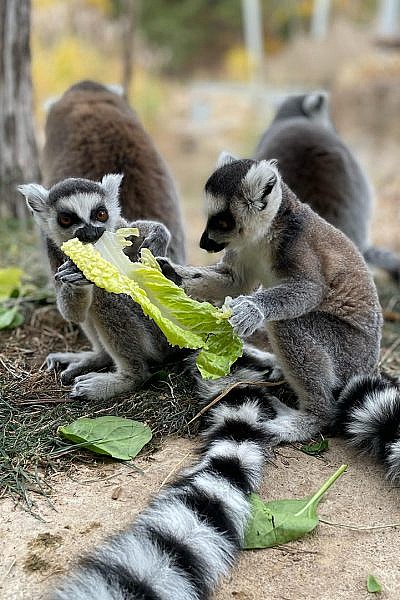

The newest residents of Water’s Edge: Africa, Allagash’s twin lemur pups, have names! The three-month-old ring-tailed lemurs’ keepers have named the female youngster Anja (ON’-juh) and her brother Elo (EE-low).
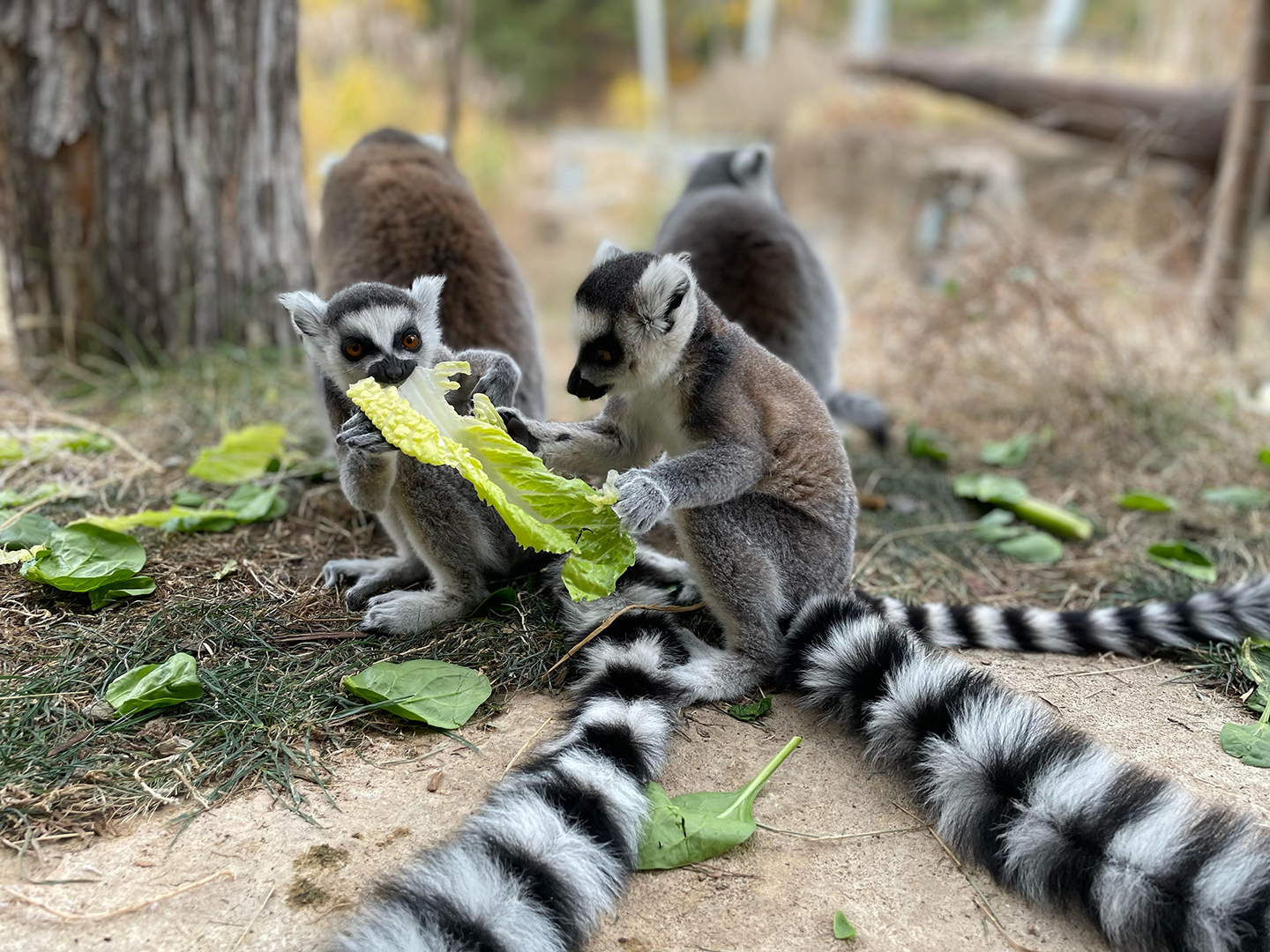
“We picked the name Anja to honor a forest reserve in Madagascar where you can find the highest concentration of ring-tailed lemurs in the world,” said Erin Henninger, Water’s Edge: Africa keeper. “Ring-tailed lemurs are endangered in the wild, and we hope her name will help us bring awareness about lemur conservation, and what people can do at home to help save Anja’s wild counterparts.”
Anja’s brother, Elo, is also named for lemur conservation. In Malagasy, the native language in Madagascar, elo means umbrella. Ring-tailed lemurs are an umbrella species, which means conservation efforts for their species typically help protect the other species sharing their ecosystem.
In the wild, lemurs are facing extinction due to habitat loss and a growing desire to own lemurs as pets. By purchasing wood and paper products that have the Forest Stewardship Council’s (FSC) label, lemur lovers can rest assured they’re not contributing to unsustainable logging practices that impact many species’ native forests. Although lemurs are adorable, they’re best cared for by organizations that know how to house this very social species in groups, with specialized care and programs aiming to save this species in the wild. Visiting lemurs at organizations accredited by the Association of Zoos and Aquariums is a great way to connect with lemurs without negatively impacting their wild populations.
Anja and Elo, along with their cousin, Maky, their mom, Allagash, their dad, Hercules, and their aunt, Rogue, are doing a superb job of helping CMZoo guests fall in love with their loveable species. The Zoo’s hope is that by making connections with our conspiracy (a group of lemurs), guests will take action to protect them in the wild.
“Anja and Elo are getting more and more independent every day,” said Henninger. “They are bundles of energy and it’s not unusual to see them zooming around the island with their six-month-old cousin, Maky. They like to jump and run around their trees and still jump on their mom, Allagash, who is really patient with their adorable antics. We’ve also seen them playfully sneak up behind their dad, Hercules, to pull on his dangling striped tail and then scurry away quickly, like they’re ringing a doorbell and running away. He knows it’s them and doesn’t seem to mind their little game.”
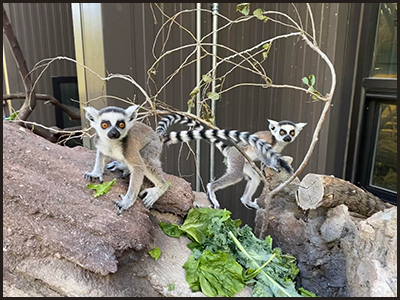
When they’re not pouncing from limb to limb or climbing on each other and their relatives, Anja and Elo can often be seen in a lemur cuddle puddle. Between all that zooming, naps are important. The six lemurs like to pile up in one hammock for an extra snuggly sleep. The twins have also started ‘sun worshipping’ like their older relatives.
“The lemurs love to climb up to the very top of the trees on Lemur Island in the morning to sun themselves,” said Henninger. “They face the sun and sit with their arms open, relaxed on their knees, with their paws palm-up, like a yoga pose. We’ve seen the twins mirroring the behavior in a very exaggerated pose with both of their arms extended way above their heads. It’s pretty cute to see them embracing those instincts, but not quite perfecting the pose just yet.”
The twins can be difficult to tell apart, but keepers say Anja’s forehead markings make an inverted widow’s peak, like her mom, Allagash. Elo’s dark fur above his eyes is more like a straight-across bowl cut, like his aunt, Rogue. Elo has longer tufts of fur on his ears than his sister. Anja is smaller than her brother and her tail isn’t as fluffy as Elo’s. Anja’s gray fur on her body is lighter than Elo’s.
“Both babies have bold personalities, but Anja seems more outgoing with keepers and has been more independent than Elo from a young age,” said Henninger. “He’s more of a mama’s boy, which is sweet. When they were still hanging on their mom all the time, Anja more often ventured off of mom to approach the rest of the group.”
Guests can see all six lemurs on their lush, green island in the middle of the hippo pool, indoors and outside, right away. Next time you’re at Water’s Edge: Africa, look out for the fast-moving twins and their family, bouncing around or enjoying a cuddle together.
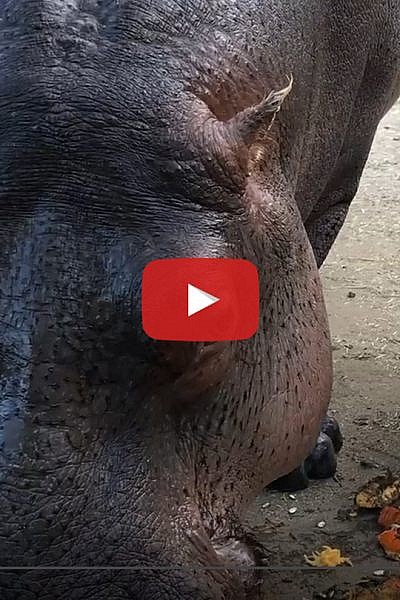

CMZoo’s four Nile hippos, Zambezi, Omo, Biko and Kasai, have had a busy summer and fall! If you’ve been following our newsletter updates and social media channels, you know that our three-month-old hippo, Omo, and his mom, Zambezi, have been bonding well and exploring all of the hippo spaces in Water’s Edge: Africa, while Omo grows like a weed. Zambezi’s sister, Kasai, and Omo’s dad, Biko, have also been staying busy meeting other Water’s Edge: Africa residents, participating in training and enrichment, and exploring their hippo home’s various yards and pools. Get the latest on our hippos with Water’s Edge: Africa keeper, Al, in this quick video update.